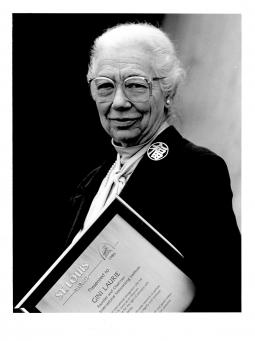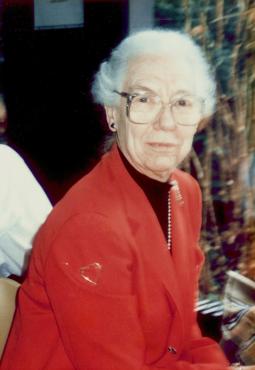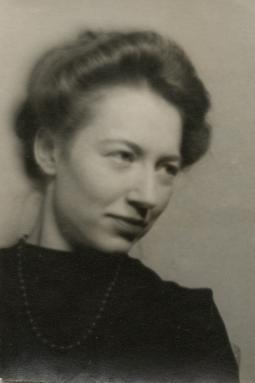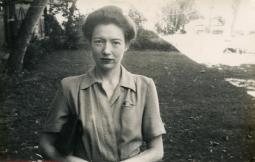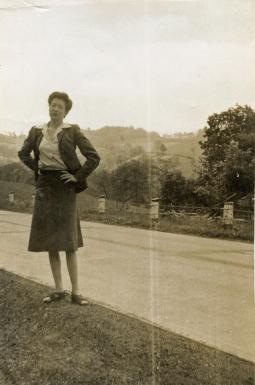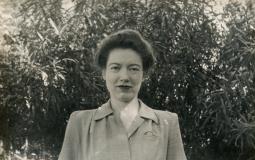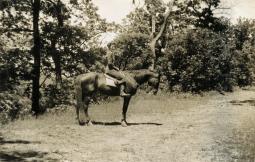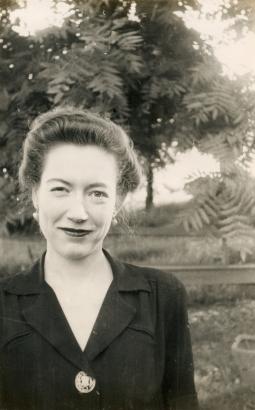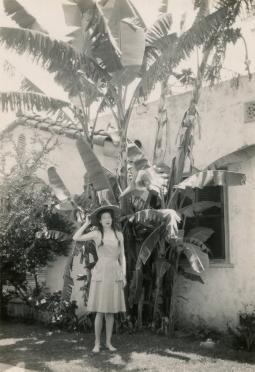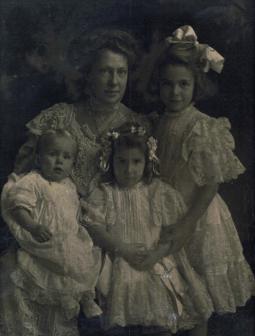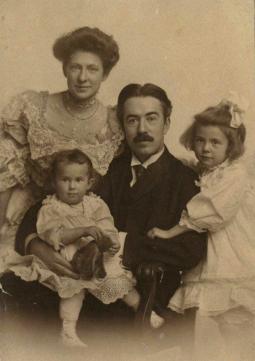Polio Place
A service of Post-Polio Health International
Virginia "Gini" Grace Wilson Laurie
Born: June 10, 1913
Died: June 28, 1989
Major Contribution:
Gini Laurie earned two titles from the disability community during her lifetime: “glue that holds the world’s polio survivors together” and “grandmother of the independent living moving.” Laurie edited a journal in the late ‘50s and ’60s that featured letters from polio survivors from all over the world with a focus on people with disabilities writing for other people with disabilities. In the '70s, it expanded to include all people with disabilities fostering collaboration among the different disability groups. A letter she published from a polio survivor in the late ‘70s was an early indication of the new condition, the late effects of polio. The organization she founded still connects people with people and offers accurate and practical information.
Other Information:
Brief biography: Virginia “Gini” Grace Wilson Laurie was born in St. Louis, Missouri, on June 10, 1913. Her father, Robert E. Wilson, MD, was a surgeon at St. John’s Hospital on Euclid Avenue in St. Louis’s Central West End. Her mother, Grace M. Cunningham, was a talented artist, who captured prizes for her painting in the art schools of Europe. Her mother painted the wall space of the parlor in their Colonial home and the ceiling of the chapel at St. John’s. The chapel scene depicted two angels, who represented two of Laurie’s sisters (Virginia and Grace) aged 3 and 9, who died of polio in 1912. Her older sister, Ella, and older brother, Robert E. Jr., both had polio during the same epidemic, but survived.
Laurie grew up as the “replacement child” for her sisters and as an advocate for her brother Bobby, of whom her father expected much, by secretly doing his work. However, Robert died of complications with breathing when he was 22. Laurie had two younger siblings, Mary Margaret “Mickie” Wilson Martin Cammerer and Jack Wilson. Mickie became very involved with post-polio and disability work for several years after the death of her first husband.
Because of her family history Laurie responded immediately in 1949 when the Red Cross asked for volunteers to assist in the Toomey Pavilion, the contagious disease ward (that later became a March of Dimes supported respiratory center for polio survivors), at City Hospital, Cleveland, Ohio. She visited the wards, crowing like a rooster, bringing balloons, distributing toys and applying hot packs. In 1958, she became co-editor of the Toomeyville Jr Gazette, the mimeographed newsletter that chronicled the lives of those in the ward, and shared bits of information about the ongoing life of those who had gone back to their homes and families. The group became a non-profit in 1960 called the International Iron Lung Polio Assistance, Inc.
In 1970, the name was changed to the Rehabilitation Gazette (from Iron Lung Polios and Multiplegics, Inc.) to reflect the organization’s current aims. By this time, the readership had expanded to include all people with disabilities, telling their stories and hints and tricks to living. The success of the journal was that the articles were written by people with disabilities and had an authenticity that gave others ideas as to how to solve their problems and the encouragement to become independent and a part of society. Isolated readers faced architectural and attitudinal obstacles and through the “Gazettes” connected with others with similar experiences. Many of these connections spurred on the development of the independent living movement, the civil rights activities of people with disabilities.
Laurie was an active board member of American Coalition of Citizens with Disabilities, Inc. (ACCD) started in 1974 by individuals with disabilities and representatives of groups of disabled individuals who attended the President’s Committee on Employment of the Handicapped. The ACCD spearheaded the effort to force the Carter administration to issues regulations implementing Section 504 of the Rehabilitation Act of 1973 and lobbied for PL94-142, the Education for All Handicapped Children Act of 1975. The group disbanded in 1983 when funding dried up during the Reagan Administration.
In 1977, Laurie wrote Housing and Home Services for the Disabled; Guidelines and Experiences in Independent Living, which was published by Harper and Row and used as a textbook in schools for occupational therapists, physical therapists and other rehabilitation specialists, and as a reference book for governmental and volunteer organizations serving people with disabilities.
After publishing a letter in the Rehabilitation Gazette (1979) from Larry Schneider (Arizona) about “tiring too easily” and the need for “simpatico physicians,” she organized a conference calling attention to the late effects of polio. Held in Chicago in October 1981, it was entitled, “What Ever Happened to the Polio Patient?” and gathered together polio survivors and health professionals to expose the issues and discuss solutions. Successful conferences were held in ’83,’85, ’87 and ‘89.
After the ’83 meeting, the organization’s name was changed to Gazette International Networking Institute (GINI) and was called “Big GINI.” She was called “Little Gini.” It was the series of international conferences that brought the late effects of polio and the organization national attention outside of the disability community.
Not wanting to retire from the work she loved, Laurie worked tirelessly until major surgery for esophageal cancer in December 1988 curtailed her day-to-day work. However, Laurie, then 76, and the board of directors had created the position of director in 1984, and the organization continued after her death in 1989. The organization, now called Post-Polio Health International, including International Ventilator Users Network, has had three directors to date: Judith Raymond Fischer (1984-1987), Joan L. Headley (1987-2017) and Brian Tiburzi (2017-present).
Laurie was a graduate of the Academy of the Sacred Heart, City House, St. Louis, Missouri, and received a bachelor’s degree with Phi Beta Kappa honors in 1934 from Randolph-Macon Women’s College in Lynchburg, Virginia.
Laurie married Joseph Scott Laurie, III (see autobiography) on February 26, 1938. They didn’t have children. Laurie was a chemist and salesperson and worked for many years with Barry-Wehmiller, St. Louis, Missouri. Upon his retirement, they moved from Cleveland back to St. Louis in 1971 at which time “Papa Joe” became very involved in the gathering of information and creating the Rehabilitation Gazette’s publications until his death March 24, 1985.
Laurie was diagnosed with esophageal cancer in November 1988. After major surgery and an extended stay for infection, Laurie returned to her home and office and helped to plan the” Fifth International Polio & Independent Living Conference” to be held in early June. In hospice care, she attended the meeting to say good bye to her polio friends. She died at home on June 28, 1989.
December 2010/ Joan L. Headley/ Post-Polio Health International
Location of papers: Post-Polio Health International (PHI)
4207 Lindell Boulevard, #110
St. Louis, Missouri, 63108-2930
314-534-0475; 314-534-5070 fax
director@post-polio.org
Descriptions of papers: Papers and letters are housed in the PHI office in St. Louis, Missouri. All of the “Gazettes” are on this website in “PHI Collections.”
Major Articles: Virginia "Gini" Grace Wilson Laurie
Housing and Home Services for the Disabled; Guidelines and Experiences in Independent. Gini Laurie. Harper and Row. 1977.
